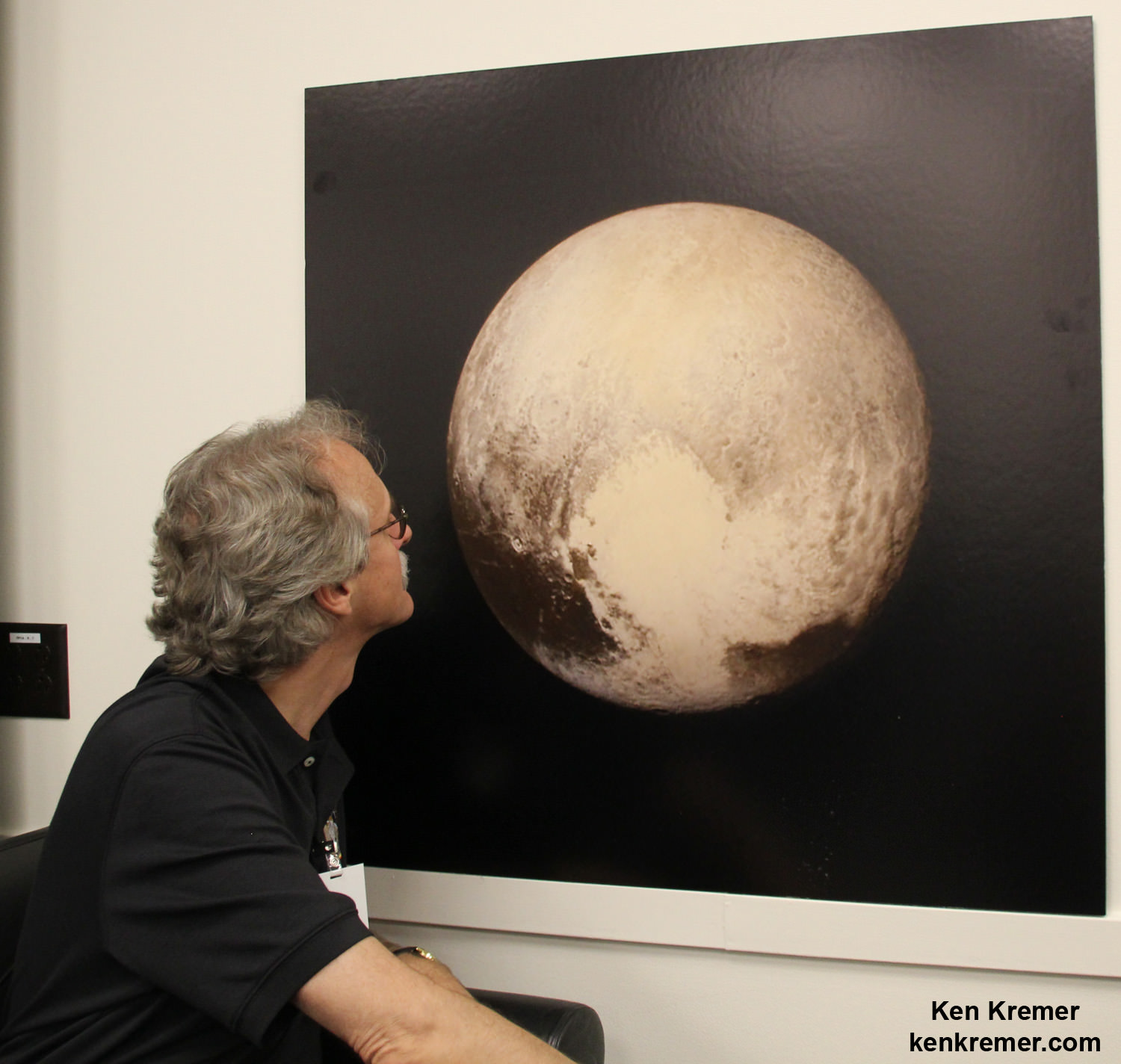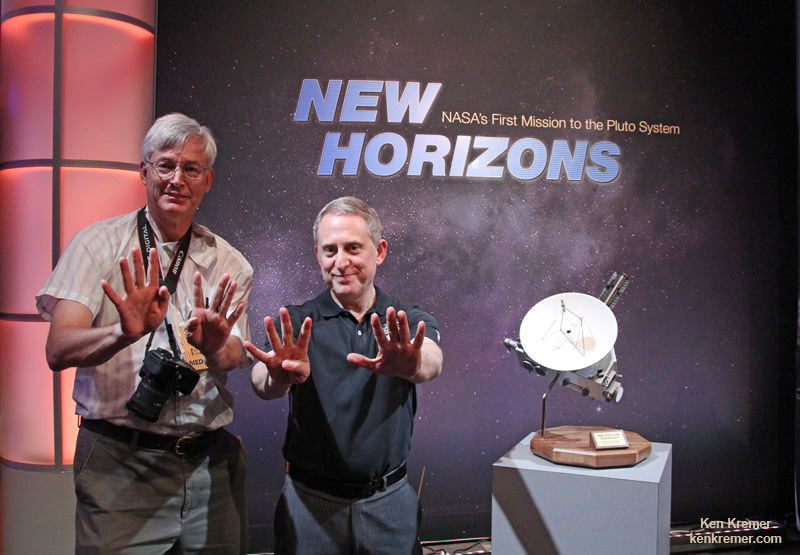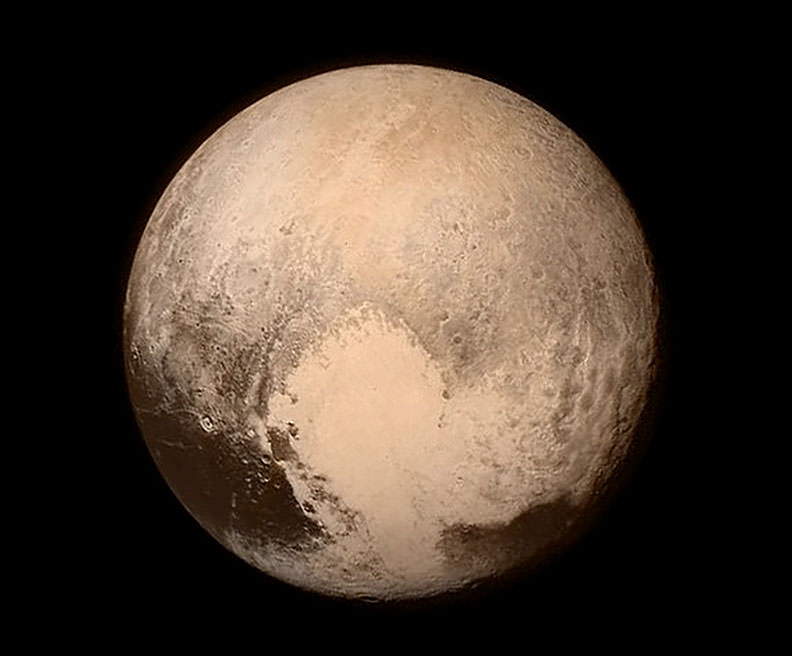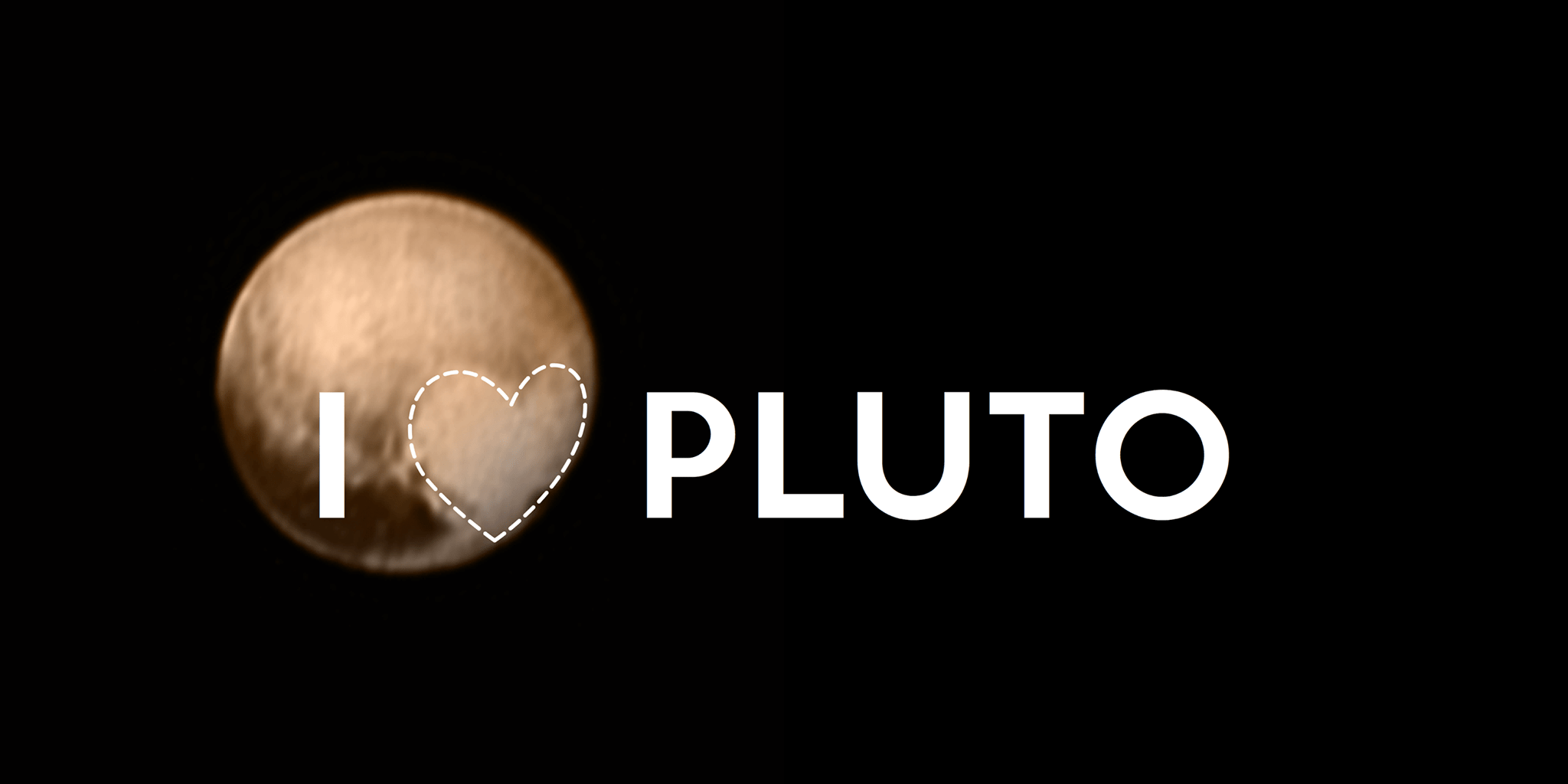APPLIED PHYSICS LABORATORY, LAUREL, MD – With this morning’s (July 14) do or die flyby of Pluto by NASA’s New Horizons spacecraft at 7:49 a.m. EDT while traveling over 3 billion miles away, America completed the initial up close reconnaissance of the last explored planet of our solar system at its frigid, far flung reaches and revealed a remarkably differentiated world dazzling us with alien terrain far beyond anyone’s expectation.
New Horizons barreled past Pluto for a history making first ever flyby at over 31,000 mph (49,600 kph) and passed only 7,750 miles (12,500 kilometers) above the planet’s amazingly diverse surface.
To mark the occasion, NASA released the highest resolution image ever taken of Pluto as the probe swooped past its prey this morning, centered on the two lobed, differentiated ‘heart’.
But because the one ton piano shaped spacecraft has been out of touch with Mission Control for the past day as planned and busily gathering hordes of priceless data, confirmation of a successful flyby didn’t reach Mission Control on Earth until half a day later when New Horizons ‘phoned home’ with critical engineering data confirmed the health of the probe at 8:53 p.m. EDT this evening- basically saying “I’m Alive”.
“With this mission we have we have visited every planet in our solar system,” proclaimed NASA Administrator Charles Bolden this evening, July 14, to a packed house of cheering team members, invited guests and media including Universe Today at the Johns Hopkins University Applied Physics Laboratory (APL) in Laurel, Maryland, during a live NASA TV media briefing shortly after accomplishing the historic feat after the nine year interplanetary voyage.
“No other nation has that capability. It’s a historic day for exploration.”
“We did it! exclaimed New Horizons principal investigator Alan Stern of the Southwest Research Institute, Boulder, Colorado, during the live media briefing.
“That’s one small step for New Horizons, one giant leap for mankind,” Stern added, paraphrasing humanity’s first moonwalker, Neil Armstrong.
“New Horizons completes the first planetary reconnaissance, a capstone of our time.”
The Pluto flyby took place on the 50th anniversary of the first interplanetary flyby by America’s Mariner 4 spacecraft when it soared past Mars in 1965.
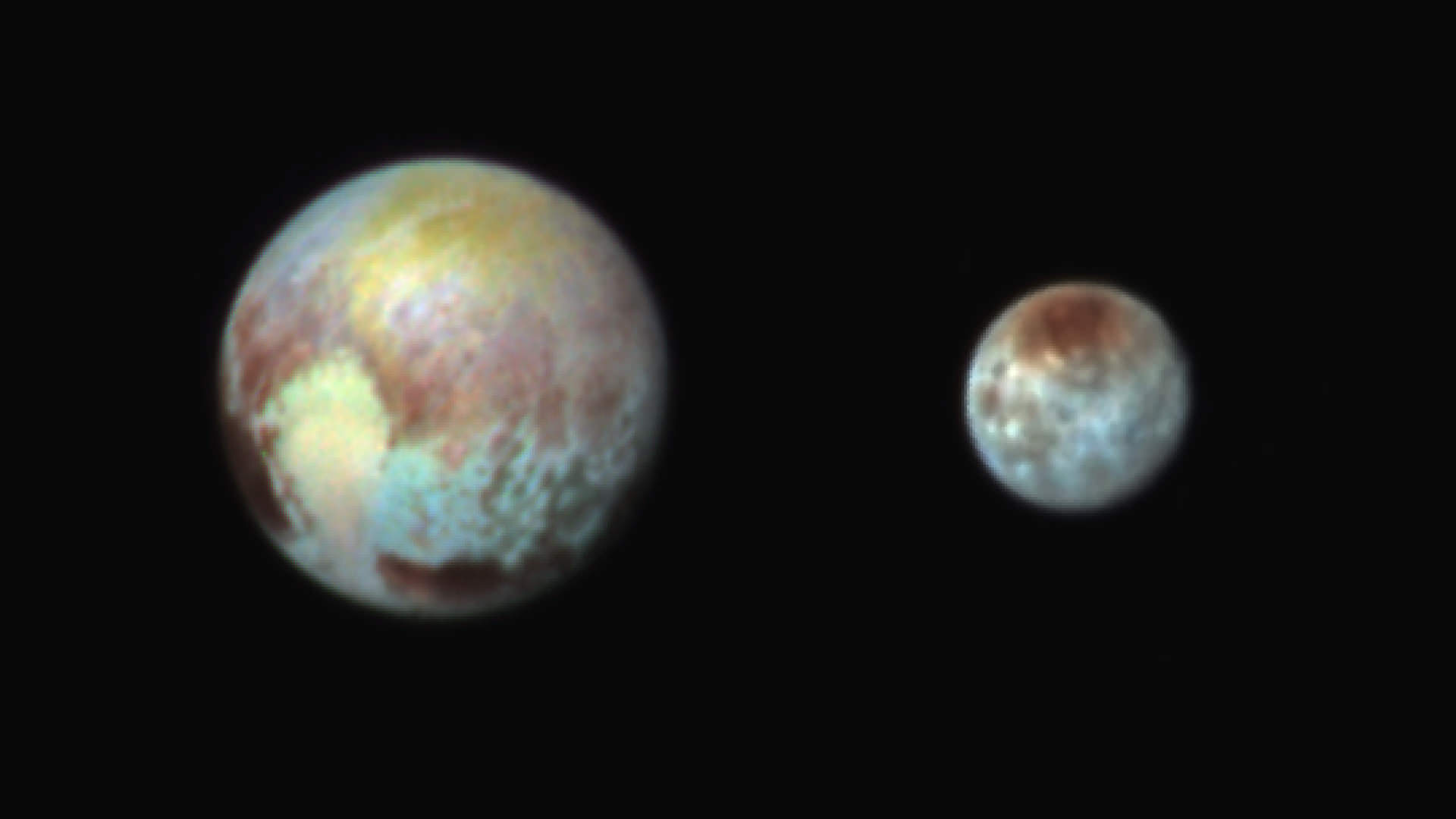
“Today we inspired a whole generation of new explorers,” Bolden said to the crowd emotionally. “And you have more to do!” – as he pointedly acknowledge a crowd of young people in the room.
Pluto is covered by a spectacular array of craters, mountains, valleys, a whale shaped dark feature and a huge heart-shaped continent of pinkinsh bright ice as seen in the image taken on July 13 when the spacecraft was 476,000 miles (768,000 kilometers) from the surface.
“New Horizons has sent back the most detailed data ever of Pluto and its system of moons.”
“Every mission expands our horizons and bring us one step further on the Journey to Mars,” said Bolden regarding NASA’s agency wide plans to send astronauts to the Red Planet during the 2030s.
“You have made Pluto almost human.”
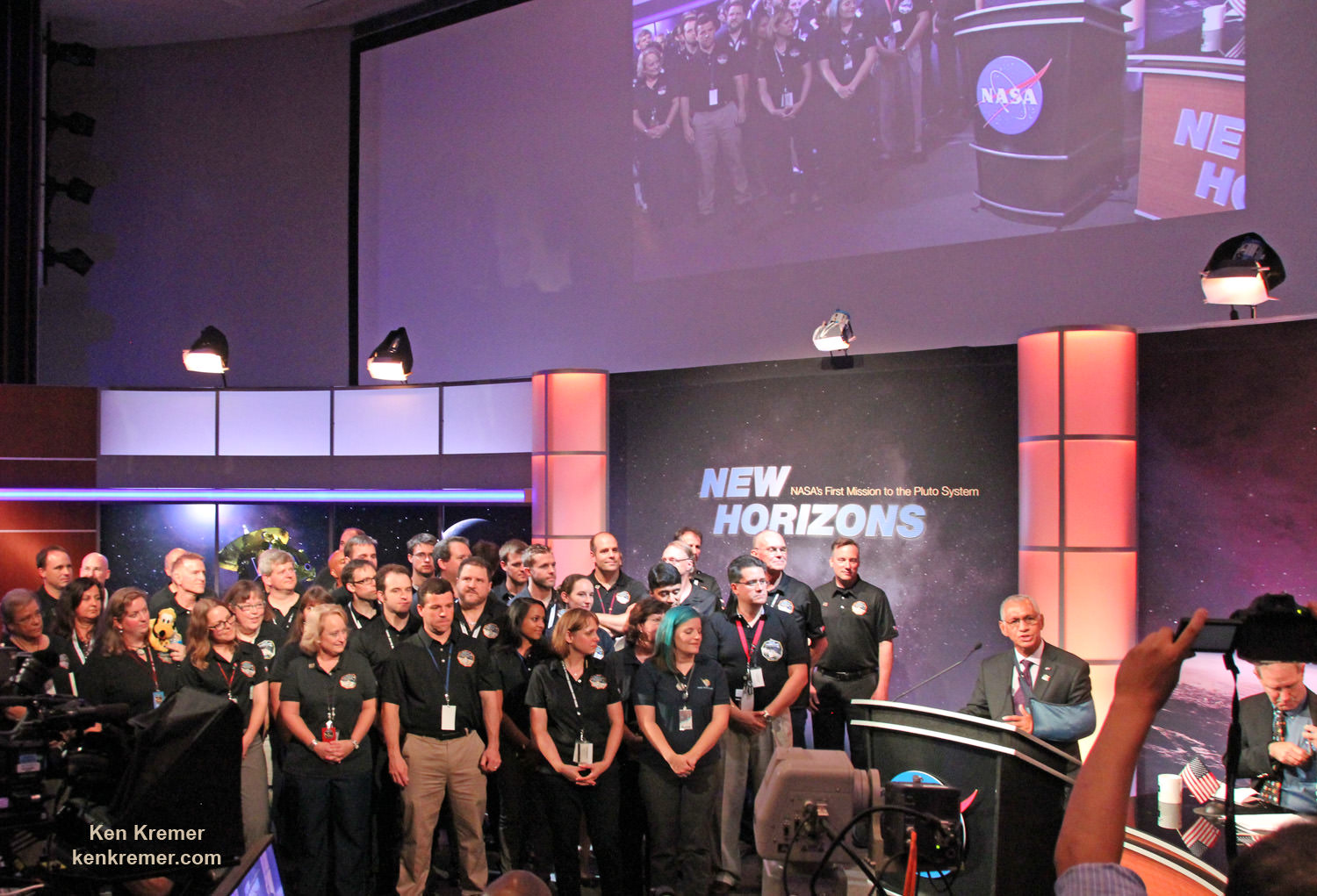
Tomorrow, the more than year long data playback begins.
“The best is yet to come,” said John Grunsfeld, NASA Associate Administrator for the Science Mission Directorate, at the media briefing.
“You haven’t seen anything yet. There are many more months of data to be sent back.”
“This is like the Curiosity landing. This is just the beginning for fundamental discoveries. It’s a tremendous moment in human history.”
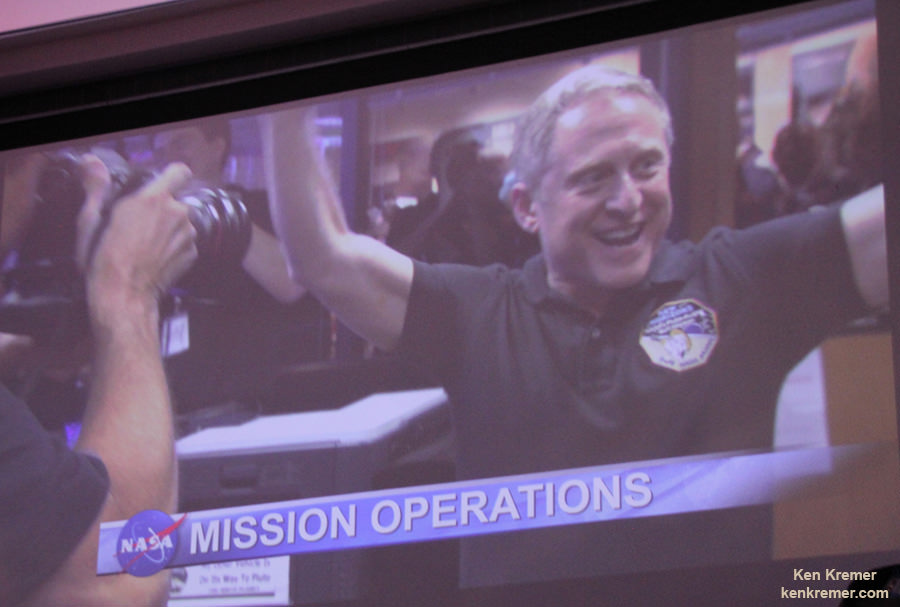
Congratulations rolled in from around the world including President Obama and world renowned physicist Stephen Hawking.
It has been three decades since we last visited planetary bodies at the outer reaches of our solar system when Voyager 2 flew past Uranus and Neptune in 1986 and 1989.
The New Frontiers spacecraft was built by a team led by Stern and included researchers from SwRI and the Johns Hopkins University Applied Physics Laboratory (APL) in Laurel, Maryland. APL also operates the New Horizons spacecraft and manages the mission.
Watch for Ken’s continuing onsite coverage of the Pluto flyby on July 14/15 from the Johns Hopkins University Applied Physics Laboratory (APL).
Stay tuned here for Ken’s continuing Earth and planetary science and human spaceflight news.
